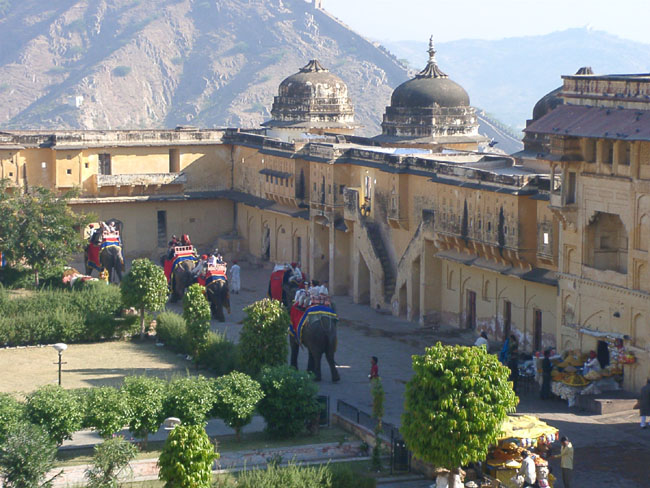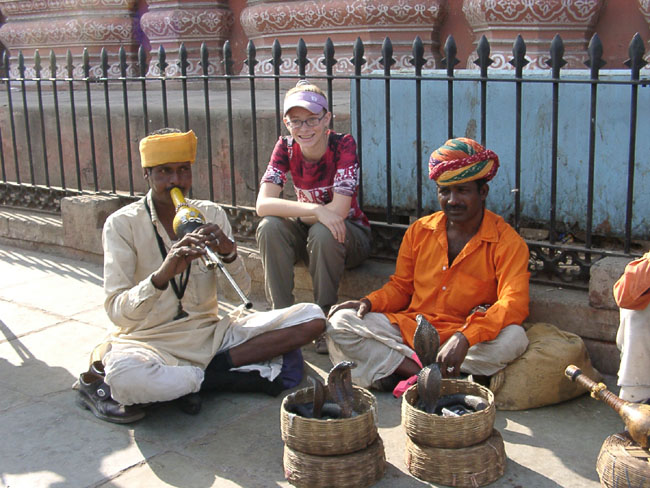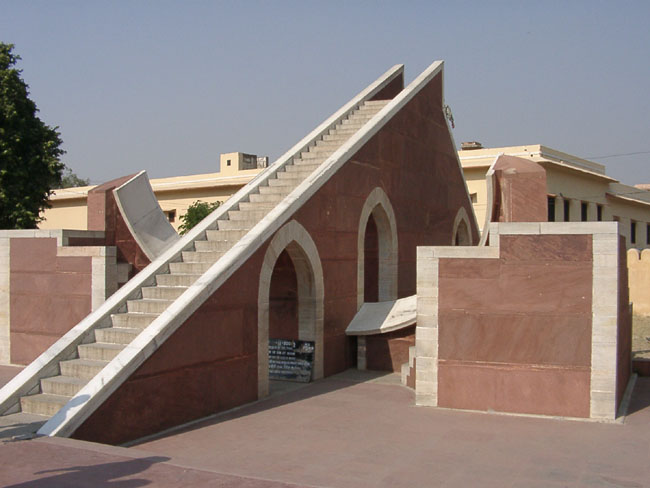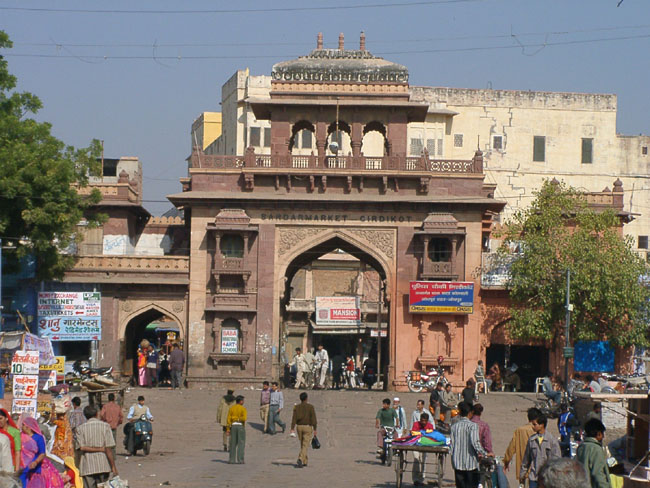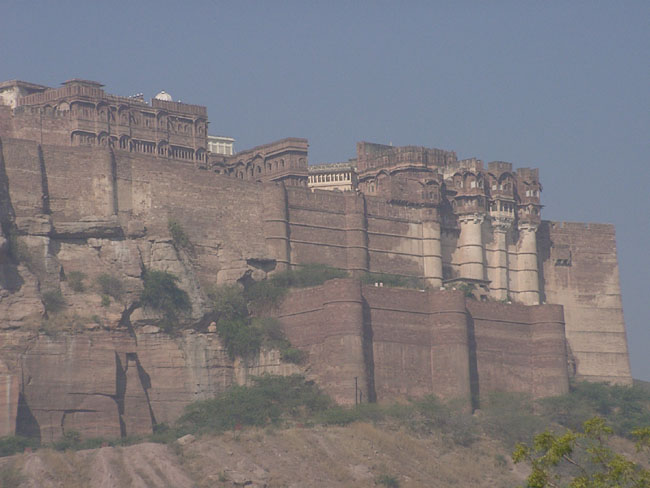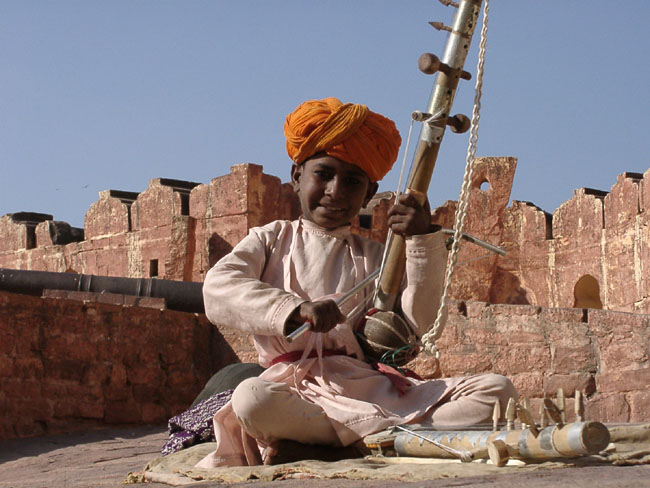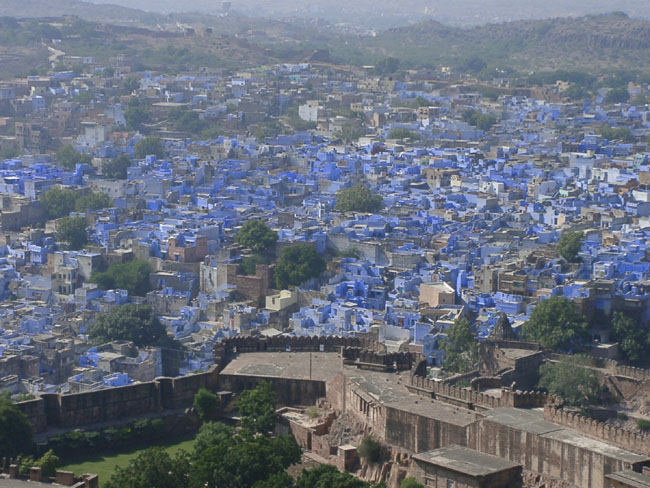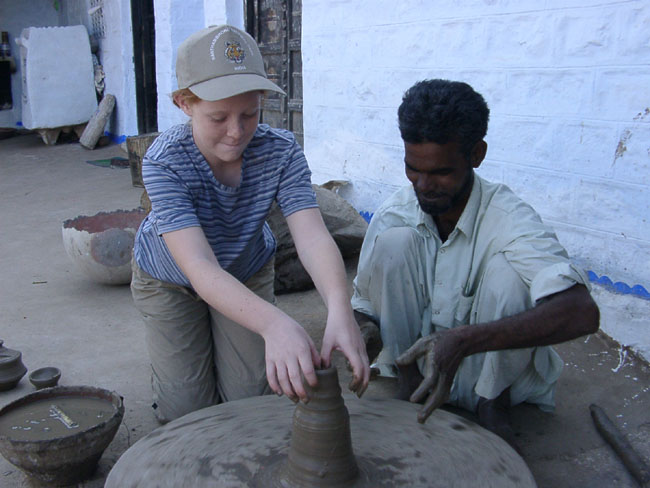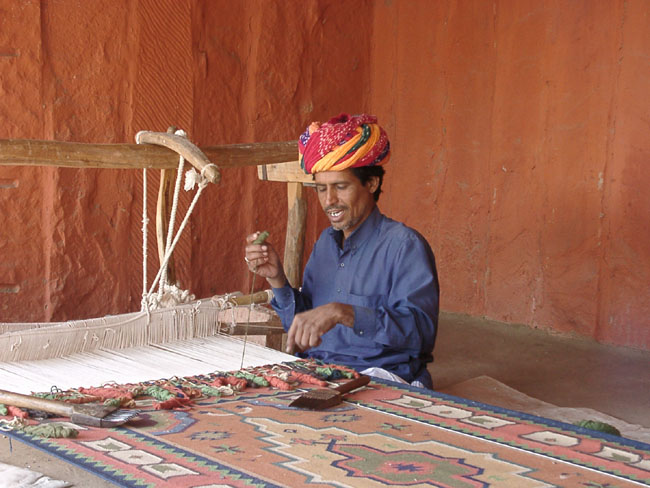| «Back to Previous Post |
Date: Thursday, 4 December 2003 04:26 PST
Subject: Greetings from Jodhpur, India
Captions for photos:
1. Amber fort in Jaipur
2. (Cobra) snake charmers near Palace of the Winds in Jaipur
3. Jantar Mantar (an observatory) in Jaipur
4. Clock tower in Jodhpur
5. View of market from clock tower
6. Meherangarh fort in Jodhpur
7. Boy musician in Meherangarh fort
8. View of the “Blue City” (Jodhpur) from the Meherangarh fort
9. Kristen on the pottery wheel in Bishnoi village (outside of Jodhpur)
10. Carpet weaver in Bishnoi villiage (outside of Jodhpur)
3 December 2003 – Day #74
Our Rajasthan journey has taken us to Jodhpur – the last major city before reaching Pakistan (the border is less than 200 miles away). Jodhpur is known as the “Blue City”. It has this name because of the paint color used on so many of the buildings. Jodhpur stands on the edge of the Thar Desert. You only have to travel about 40 miles out of the city before you reach the dunes. The city is dominated by a massive fort called the Meherangarh. From the fort you can see many blue buildings and the six mile long wall that surrounds the city.
When we last wrote, we were still in Sawai Madhopur. At 2pm on our day of departure we were met by the auto rickshaw driver that had brought us to change our traveler’s checks (see our previous email for background). We then took an uneventful three-hour train ride to Jaipur, the capital of Rajasthan.
Jaipur, known as the “Pink City”, is large with many interesting sites. Like Agra and other cities in India, Jaipur has several forts. These forts provided security for the Maharaja (local king). We visited the impressive Amber Fort, a short distance outside of the city. We also saw the Maharaja’s palace (called the City Palace Complex), Jantar Mantar (an observatory dating from the 18th century) and the Hawa Mahal (called the Palace of the Wind). Nearby, we snapped a picture of Lauren with two (cobra) snake charmers.
After two full days in Jaipur, we took a six-hour train ride to Jodhpur. Unfortunately, the train left 2 1/2 hours late, so we arrived after 11pm. We were able to call our hotel before we left Jaipur to tell them we would be late. They said that this was “no problem” and suggested we call them when we arrived so that they could pick us up. When we arrived, we went to phone center at the train station. Unfortunately, people must have overheard my conversation because five minutes after the phone call was completed, a man approached us saying he was sent from our hotel (he used the name) to pick us up. A few minutes later, another man tried the same ploy. Sandy and Lauren were suspicious both times and posed questions that that they couldn’t answer. Finally, someone came asking for “Mr. Darren”. As it turned out, the owner of our hotel is a Christian (only 2% of the Indian population and only 1% of Rajasthan’s population are Christians). Both he and his wife’s grandfathers became Christians as a result of the work of Methodist missionaries.
We had a blast in Jodhpur. The morning after we arrived, we took an auto rickshaw to the city center. There is a clock tower there. For 5 rupees, I bought a ticket to go to the second story of this building. It was one of the tallest structures around and afforded great views of the market and the surrounding sites. We then walked up a hill to Jodhpur’s fort called Meherangarh. This was by far the best man-made structure we had seen in India after the Taj. The raja had turned this fort over to a trust in the 70’s. This trust has received funds over the years from many sources including the Getty Foundation. Admission included an electronic audio guide that brought the place alive for all of us. We spent the rest of the day walking around the old city sampling Indian sweets and lassis (yogurt drink).
The next day, we took a tour of the Bishnoi villages outside of the city. These villages are inhabited by Jains who among other things hold to the sanctity of all life. Through their efforts, the khejri tree, as well as the native wildlife, has been preserved. We saw springbok, black buck and a variety of birds. They live in simple huts or block buildings as either farmers or tradesmen. We visited a potter and a carpet cooperative. The kids got a lot out of the activities which included making a ceramic candlestick using a hand turned pottery wheel and holding three day old goats. We also ate a traditional lunch of potatoes, dahl (using local mung beans instead of lentils) and millet chipatis (flat bread).
Tonight, we will take an all-night train to Delhi. After one night there, we will fly to our next destination – Brisbane, Australia. This will be accomplished with three flights through Thailand and Brunei. After two months away from home, the kids are looking forward to the hamburgers and chain hotels available in Australia.
God’s Blessings,
Darren
| «Back to Previous Post |

